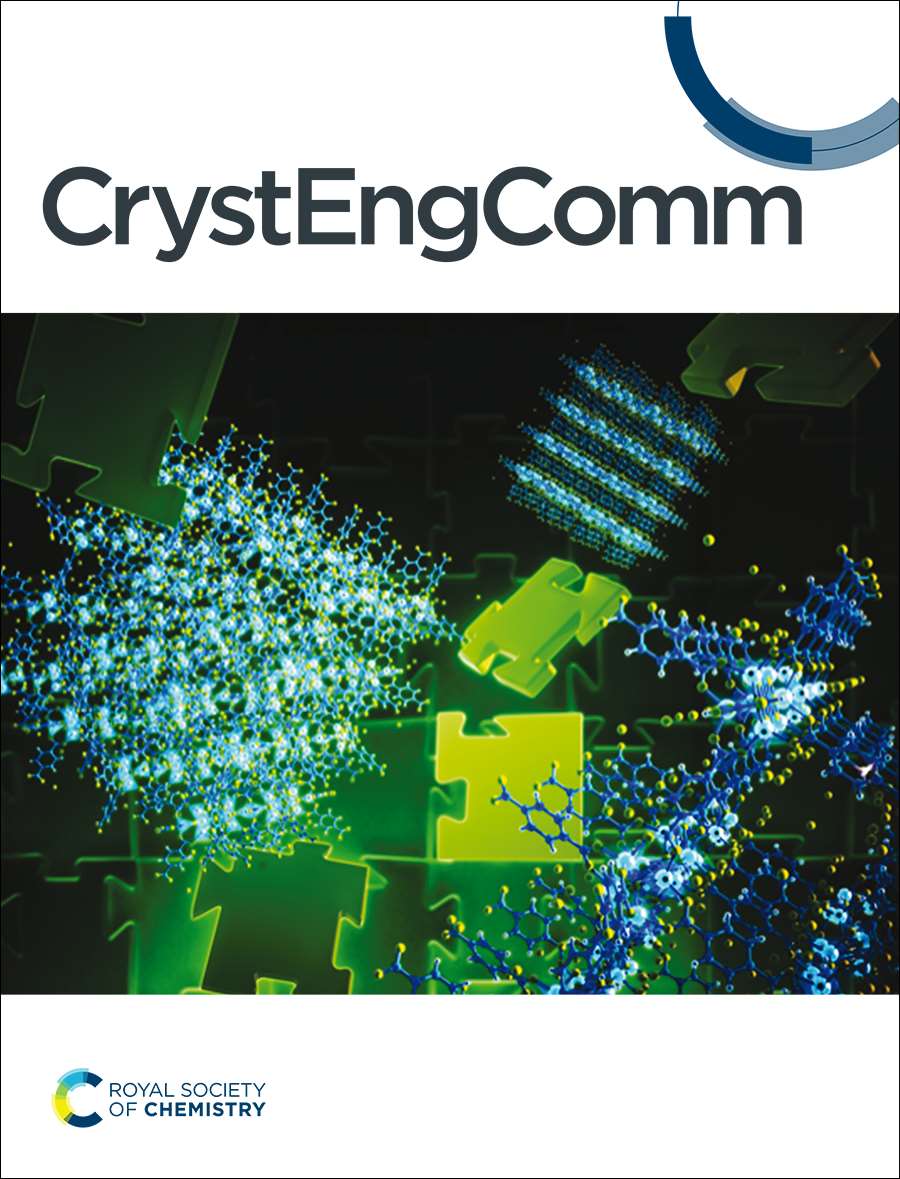有机和碱金属阳离子对苯三羟基三磺酸配体晶格的影响
IF 2.6
3区 化学
Q2 CHEMISTRY, MULTIDISCIPLINARY
引用次数: 0
摘要
对不同阳离子的2,4,6-三羟基苯-1,3,5-三磺酸配体(H6L)进行了晶体学研究。三聚氰胺加合物表现出h键三维晶格(1),胍的掺入导致形成二维(2D)层(2),配体芳香性异常丧失,与钾离子反应形成三维(3D)网络(3),其通道具有h键水链。在室温下,3的质子电导率为2.61 × 10−7 S cm−1,表明其在质子导电材料中的应用潜力。本文章由计算机程序翻译,如有差异,请以英文原文为准。

Influence of organic and alkali metal cations over a crystal lattice of the benzenetrihydroxy trisulfonate ligand†
A crystallographic investigation of the 2,4,6-trihydroxybenzene-1,3,5-trisulfonic acid ligand (H6L) with various cations was conducted. The melamine adduct exhibited an H-bonded three-dimensional lattice (1), guanidine incorporation resulted in the formation of a two-dimensional (2D) layer (2) with unusual loss of aromaticity of the ligand and reaction with potassium ion afforded a three-dimensional (3D) network (3) with channels that possessed an H-bonded water chain. The proton conductivity of 3 was 2.61 × 10−7 S cm−1 at room temperature, indicating its potential application in proton-conducting materials.
求助全文
通过发布文献求助,成功后即可免费获取论文全文。
去求助
来源期刊

CrystEngComm
化学-化学综合
CiteScore
5.50
自引率
9.70%
发文量
747
审稿时长
1.7 months
期刊介绍:
Design and understanding of solid-state and crystalline materials
 求助内容:
求助内容: 应助结果提醒方式:
应助结果提醒方式:


